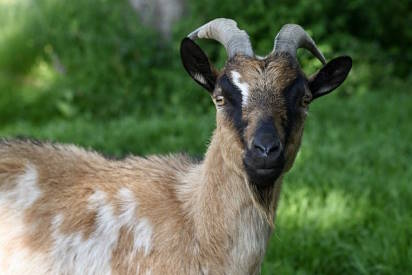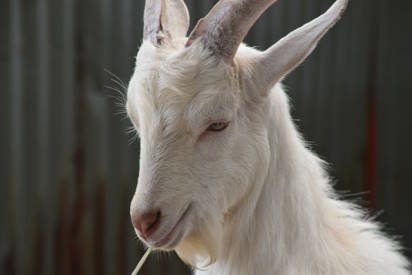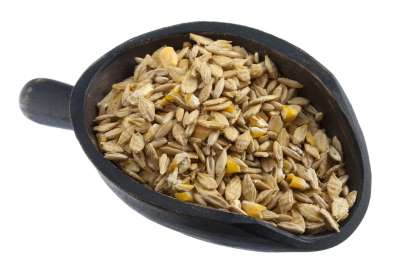When I first got into the world of goats, one of my biggest puzzles was figuring out their diet. I’d often catch myself pondering: can goats eat timothy hay? Well, for those who’ve also scratched their heads over this question, here’s the answer: Yes, they can! But, like all things related to our caprine friends, there’s a bit more to it.
I’ve always believed that understanding our pets and livestock’s dietary needs is essential. It not only ensures their health but deepens the bond we share with them. From the nuances of nutritional content to the right method of introduction, every detail counts.
In this article, we’ll delve deeper into the world of timothy hay and its place in a goat’s diet. Whether you’re a seasoned goat owner or just starting out, understanding what’s best for these endearing creatures is a fascinating journey. Let’s jump in!
Background of Timothy Hay
Have you ever strolled down the feed aisle and noticed the bags of timothy hay, wondering what it’s all about? Let’s dive in.
What is Timothy hay?
Timothy hay is a perennial grass that is commonly harvested as hay for animals. It originates from Europe but has become prevalent in North America due to its high-quality nutrition and palatability for various animals. It’s named after Timothy Hanson, who promoted its use in the 1700s.
Common uses of Timothy hay in animal feed
Predominantly, timothy hay is known as the favored hay for rabbits, guinea pigs, and horses. Its fiber-rich content and suitable protein levels make it an ideal choice for these animals. Some owners even use it as bedding, though its nutritional benefits are often best utilized as feed.
[GoatAffiliate]
Dietary Needs of Goats
Before tossing any new food into your goat’s trough, it’s essential to understand their dietary needs. Goats are ruminants, meaning they have unique nutritional requirements.
Basic nutrition requirements for goats
Goats need a balance of carbohydrates, proteins, vitamins, and minerals. As browsers, they love variety and would naturally eat a mixture of shrubs, weeds, grasses, and trees. Their diet keeps their rumen – the first of their four stomach compartments – functioning correctly. This balanced diet helps them process fibrous plant material and extract the nutrients they need.
Common foods and forages for goats
While goats are known for their broad palates, some staples in their diet include alfalfa, grains (like corn and oats), and, of course, the occasional treat of fruits or vegetables. Fresh water and mineral supplements are also an integral part of their daily intake.
Benefits of Timothy Hay for Goats
Now, let’s get to the crux of the matter. Is Timothy hay a good fit for your goat?
Nutrient composition of Timothy hay
Compared to some other types of hay, timothy hay usually has a moderate protein content and is rich in fiber. This makes it an excellent choice for animals that require fiber-rich diets.
How Timothy hay complements a goat’s diet
While goats would typically enjoy a variety of forage, timothy hay can be a beneficial part of their diet. The high fiber content helps with digestion, ensuring the rumen functions efficiently. Plus, if you’ve got a picky eater, timothy hay’s palatability might win them over.
Potential Concerns When Feeding Timothy Hay to Goats
As with anything in life, it’s all about balance.
Over-reliance on any single feed source
Relying solely on timothy hay could limit the nutrients your goat gets. While it’s a good source of certain nutrients, it might lack others that goats need for optimal health.
Possible lack of essential nutrients in Timothy hay alone
Timothy hay alone might not be sufficient in calcium and protein when compared to something like alfalfa. If Timothy hay is a significant portion of their diet, consider supplemental feeds or minerals.
Tips for Introducing Timothy Hay to Your Goat’s Diet
New food, new challenges. Here’s how to ease the transition.
Gradual introduction to prevent digestive upsets
It’s a good rule of thumb to introduce any new feed gradually over a week or two. Start by mixing a small amount of timothy hay with their usual feed, increasing the quantity of timothy hay daily.
Mixing with other hays or feeds for a balanced diet
Combining timothy hay with other types, like alfalfa, can provide a balanced blend of nutrients. This not only ensures they’re getting a varied diet but also caters to their browsing nature.
Observing your goat’s preferences and health reactions
Always keep an eye out for any changes in behavior, eating habits, or overall health when introducing new food. Your goat will often let you know if something’s amiss!
Factors Influencing Timothy Hay Quality
Timothy hay, while a favorite among many livestock owners, varies in quality. This variation isn’t merely by chance; several key factors come into play in determining the quality of this popular fodder. To ensure that your goats get the best of the lot, it’s essential to understand these influencing elements.
Harvesting Time
The nutritional profile of timothy hay largely depends on when it’s harvested. The early bloom stage is often the most ideal as the hay possesses a higher protein content and digestible energy at this phase. If left for too long, the stems become coarse, reducing their nutritional value and palatability.
Soil Quality and Fertilization
The soil in which timothy hay grows plays a significant role in its quality. Nutrient-rich soil tends to produce higher-quality hay. Additionally, the use of fertilizers can boost the nutritional content of the hay, but it’s vital to ensure that no harmful chemicals are used that might be ingested by the goats.
Weather Conditions
The weather during the growing and harvesting seasons can make or break the quality of timothy hay. Excessive rain during harvesting can lead to moisture-laden hay, which can promote mold growth. On the other hand, very dry conditions might result in hay that’s too dry, losing its essential nutrients.
Storage
Post-harvesting storage plays a pivotal role. Timothy hay needs to be stored in a dry, cool place to maintain its quality. Exposure to moisture can result in moldy hay, which is harmful to goats. Proper ventilation during storage can prevent the growth of harmful fungi and bacteria.
Pest and Disease Management
Pests or diseases can greatly affect the quality of timothy hay. Regular monitoring during the growth phase and ensuring that the hay is free from pests and diseases during storage can keep its quality intact.
What other animal feeds can goats eat apart from timothy hay?
Diving into the dietary world of goats is akin to exploring a vast menu of greens, grains, and surprising treats. While timothy hay holds its own revered spot, a plethora of other options can find their way into a goat’s diet. Let’s uncover the pros and cons of some popular fodder choices for our caprine buddies.
Alfalfa
Often dubbed the “queen of forages,” alfalfa is a nutrient-rich legume hay that many goats absolutely adore. Packed with protein, calcium, and other essential nutrients, it’s particularly beneficial for lactating does, as it helps boost milk production. However, its richness means it’s best served in moderation to prevent overfeeding and potential digestion issues.
Read More: Can Goats Eat Alfalfa? Ultimate Healthy Feeding Guide
Straw
Straw, primarily the byproduct of grain crops like wheat or barley, isn’t as nutritionally dense as some of the other options. While it provides good roughage and can be an excellent bedding material, relying on it as a primary feed source might leave your goats missing out on essential nutrients. It’s best used as a filler or supplement to more nutrient-packed options.
Read More: Can Goats Eat Straw? Debunking Myths & Exploring Facts
Sweet Feed
Sweet feed is a mix of grains and molasses, and as the name suggests, it’s on the sweeter side. Goats often find it irresistible! However, because of its high carbohydrate content, it should be treated more like a treat rather than a staple. Overfeeding sweet feed can lead to obesity and other health issues, so it’s essential to use it judiciously.
Read More: Can Goats Eat Sweet Feed? 5 Excellent Benefits
Beet Pulp
Derived from sugar beets after sugar extraction, beet pulp is a fibrous feed that’s often given to livestock as a source of digestible fiber. For goats, it can be a great supplemental feed, especially when moisture or additional calories are required. Before feeding, it’s commonly soaked in water to expand, making it easier for goats to digest.
Read More: Can Goats Eat Beet Pulp? 7 Excellent Benefits
Bermuda Hay
Bermuda hay is a fine-stemmed grass hay, and it’s often used as a primary forage for various animals, goats included. While it doesn’t pack as much of a nutritional punch as alfalfa, it’s a reliable source of fiber and essential nutrients. If you’re using Bermuda hay, ensure it’s free from mold or contaminants to keep your goats in tip-top shape.
Read More: Can Goats Eat Bermuda Hay? A Delicious Dive into Dietary Choices
Can goats eat timothy hay – final thoughts
Well, who knew that the world of timothy hay could be such a riveting topic for our goat pals? From its rich fibrous content to the joys of balancing it with other feeds, this hay has earned its place in the limelight. Can goats eat timothy hay? Absolutely! But remember, moderation is key, and variety is the spice of a goat’s life (or diet).
As you embark on your goat-feeding journey, take a moment to appreciate the simplicity of something like hay and the profound impact it can have on your goat’s well-being. After all, a happy goat makes for a happy goat parent!
Related Articles:







